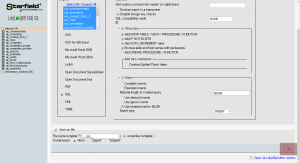
- #GODADDY PHPMYADMIN CREATING A NEW USER HOW TO#
- #GODADDY PHPMYADMIN CREATING A NEW USER INSTALL#
- #GODADDY PHPMYADMIN CREATING A NEW USER REGISTRATION#
#GODADDY PHPMYADMIN CREATING A NEW USER HOW TO#
In this case, for example, we will see how to reset the password of a WordPress user. phpMyAdmin WordPress: reset passwordsĪmong the different functions of phpMyAdmin for WordPress we can also reset user passwords. The field we are interested in modifying is user_login: we enter the new user name in the value field and then click on the Go button to save the changes. We will then have access to the list of all registered WordPress users, choose the one we want to edit and click the Edit button next to the username. If you have installed WordPress with Softaculous you can trace the database information from the WordPress Manager under Database Details. Simple, just open the wp-config.php file and you will find the database name next to DB_NAME. How can you figure out which database is associated with the installation you are interested in? If you have created more than one WordPress installation on your server, or even in localhost, you have created more than one WordPress installation, when you access phpMyAdmin you will have a list of databases in front of you. Two operations that we can’t do on our own simply from the dashboard, but that become extremely simple with the help of phpMyAdmin.īefore proceeding we need to understand how database browsing works, so that we can select the right one in case there is more than one on the server. First we will focus on user management and in particular we will see how to change the user name and reset the password. We have seen how information is stored and divided in the different tables of the database. Before doing so, make sure you have a copy of a backup so that you can restore the database in case of errors. Remember that changing the database may affect the operation of your site. Now that we’ve seen how WordPress organizes and stores information, let’s see what operations you can do by accessing the database through phpMyAdmin. In installations of a WordPress multisite the network administrator can also block spam from users or delete some users, that’s why two new fields are generated: spam and delete in this table.
#GODADDY PHPMYADMIN CREATING A NEW USER REGISTRATION#
Wp_user: contains all user information, such as username, email, and registration date. Wp_usermeta: in the table you can find the meta data of the users registered to your site.

For example, it is thanks to this table that WordPress is able to define categories and subcategories. Wp_term_taxonomy: if in the wp_terms table we find the single elements (tags and categories) in this table hierarchies between the various elements are established. Wp_term_relationships: this is the table where the link of each post with the respective categories and tags is defined. Wp_termmeta: the meta data associated with the various elements of the taxonomy. Wp_terms: this table is dedicated to WordPress taxonomy so categories and tags. Wp_posts: contains not only blog posts, but also pages and menus of the site. Wp_postmeta: in this table you can find the meta data associated to all the posts created on the site. Wp_options: contains general WordPress settings, as well as plugin and theme specific settings. Wp_links: contains the data associated with the link management, a function that is no longer integrated in the dashboard, but can be used with the Link Manager plugin. Wp_comments: is the table that contains the actual comments along with information about the author, such as name, email and a possible site address. Wp_commentmeta: it contains the meta data associated with the comments on the site. Typically the prefix used is wp but depending on the individual installation, it may vary. In the tables we’re going to examine, you’ll see a prefix followed by a hyphen and the name of the table that offers information about its contents. In any case, the database will contain tables created by default, let’s see what they are one by one.
#GODADDY PHPMYADMIN CREATING A NEW USER INSTALL#
For example with Softaculous included in our plans shared hosting, vps cloud hosting and dedicated server you can install WordPress in just a few clicks. When you choose to install WordPress manually you need to create a database, if instead you use an auto installer like Softaculous this process is done automatically. Using phpMyAdmin for WordPress can be useful in database management, if you already know what is WordPress you may also know that all information about articles, comments and so on are stored within a MySQL database.įirstly, let’s look at how the data is organized in this database.Įvery WordPress installation requires a database to function. phpMyAdmin for WordPress: optimizing the database.phpMyAdmin for WordPress: change theme from database.

phpMyAdmin for WordPress: disable plugins.

How the WordPress database is organized.


 0 kommentar(er)
0 kommentar(er)
